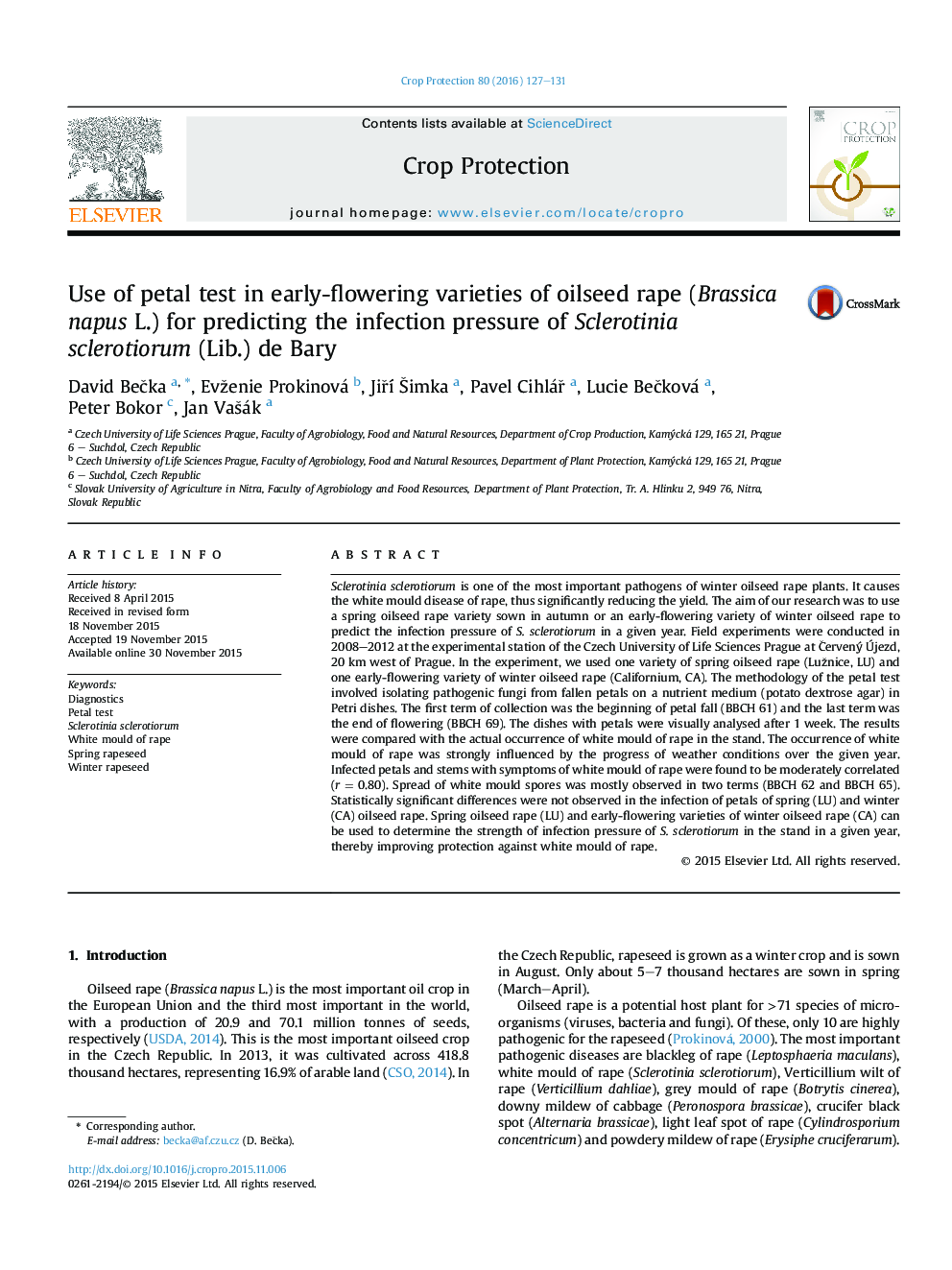| کد مقاله | کد نشریه | سال انتشار | مقاله انگلیسی | نسخه تمام متن |
|---|---|---|---|---|
| 4505578 | 1624307 | 2016 | 5 صفحه PDF | دانلود رایگان |
• We used early-flowering varieties of oilseed rape to predict the infection pressure of Sclerotinia.
• In the petal test, pathogenic fungi from fallen petals were isolated in Petri dishes.
• The percentage of infected petals was compared with the real occurrence of white mould of rape.
• Early-flowering varieties can provide information on the strength of infection pressure.
Sclerotinia sclerotiorum is one of the most important pathogens of winter oilseed rape plants. It causes the white mould disease of rape, thus significantly reducing the yield. The aim of our research was to use a spring oilseed rape variety sown in autumn or an early-flowering variety of winter oilseed rape to predict the infection pressure of S. sclerotiorum in a given year. Field experiments were conducted in 2008–2012 at the experimental station of the Czech University of Life Sciences Prague at Červený Újezd, 20 km west of Prague. In the experiment, we used one variety of spring oilseed rape (Lužnice, LU) and one early-flowering variety of winter oilseed rape (Californium, CA). The methodology of the petal test involved isolating pathogenic fungi from fallen petals on a nutrient medium (potato dextrose agar) in Petri dishes. The first term of collection was the beginning of petal fall (BBCH 61) and the last term was the end of flowering (BBCH 69). The dishes with petals were visually analysed after 1 week. The results were compared with the actual occurrence of white mould of rape in the stand. The occurrence of white mould of rape was strongly influenced by the progress of weather conditions over the given year. Infected petals and stems with symptoms of white mould of rape were found to be moderately correlated (r = 0.80). Spread of white mould spores was mostly observed in two terms (BBCH 62 and BBCH 65). Statistically significant differences were not observed in the infection of petals of spring (LU) and winter (CA) oilseed rape. Spring oilseed rape (LU) and early-flowering varieties of winter oilseed rape (CA) can be used to determine the strength of infection pressure of S. sclerotiorum in the stand in a given year, thereby improving protection against white mould of rape.
Journal: Crop Protection - Volume 80, February 2016, Pages 127–131
